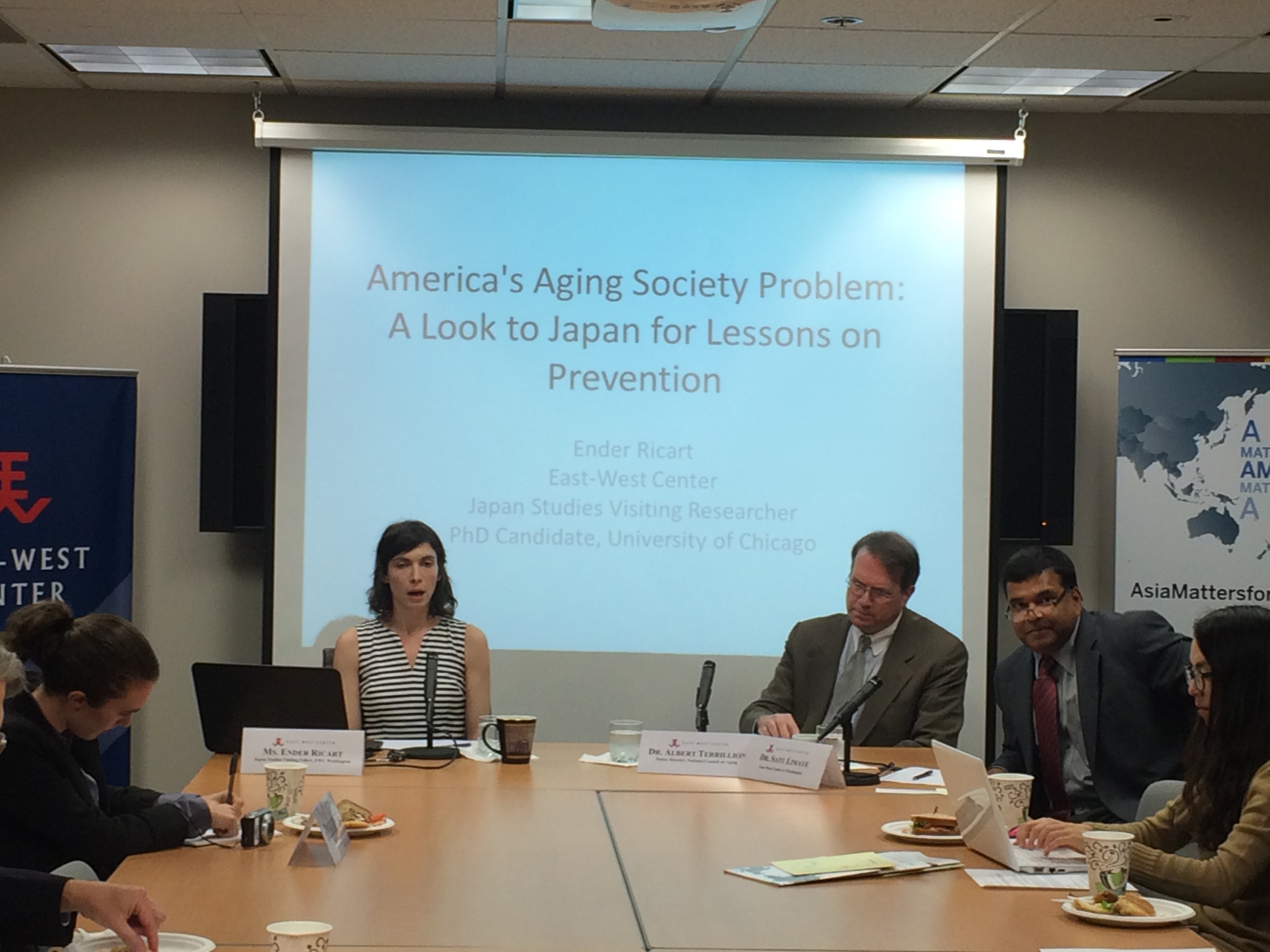WASHINGTON – Despite the differences in culture, social structures and healthcare systems, the United States could look to Japan for innovative ways to cope with the accelerated growth of its aging population, think tank experts say.
“Japan has been dealing with the aging society problem much longer than the United States,” Ender Ricart, a Japan studies visiting fellow at the University of Chicago, said at a panel discussion hosted by the East-West Center in Washington last week.
“As [of] 2014, Japan has 25.1 percent of its population at the age of 65 or over,” Ricart said. The U.S. will face a similar challenge by 2050 when 21 percent of its total population is expected to be 65 or older.
In Japan, Ricart said, a comprehensive community healthcare system uses private, specialized agencies to work with aging baby boomers in group settings, rather than relying on the traditional one-to-one healthcare model.
The conceptual and cultural differences stand out when considering the aging issue in the two countries. In Japan, the emphasis is on a social obligation to society, Ricart said, while America seeks solutions based on a more liberal spirit.
The aging cohort in America, swelled by the post-war baby boom, will become larger than the under-18 population by 2056, a U.S. Census Bureau report from 2012 shows.
“At least this year we probably have seen a 45 percent increase of people from 65 to 75 seeking help,” said Shari Cash, director of admissions at Brinton Woods Health & Rehabilitation Center at Dupont Circle in Washington.
Prevention programs, designed to maintain good health, focus primarily on the “American baby boomer population while they are still young and healthy,” Ricart said. “They can actively participate in prevention programs that could prevent chronic life-threatening and costly conditions.”
Healthcare System difference
In Japan, all senior citizens can purchase long-term healthcare coverage for various services. It comes with stipends for devices that help seniors with more comfortable and convenient living.
Older Americans, of course, have Medicare for doctors’ visits and hospital stays, but the government does not subsidize long-term care for individuals who need nursing home care or some other extended assistance.
Shari Cash, of the Dupont Circle rehab center in Washington, said many patients don’t have insurance to cover their stays. The average cost at Brinton Woods is $810 per month.
Problem-conscious
Ricart said closer cooperation and better communication between healthcare policy makers and aging specialists is needed in the U.S.
Even though both groups are aware of the growing issue posed by the aging population, policy makers are more focused on cutting costs, while aging specialists try to build more comprehensive infrastructure, Ricart said.
Japan’s Prevention-based healthcare solution
Japan is facing bigger challenges with its aging population, since 38 percent will be over 65 by mid-century. Here too, policy makers and aging specialists must cooperate to develop an efficient system.
The country’s long-term insurance plan issues individuals a certain amount of points instead of money to spend on health services, such as nursing home stays. Care managers in Japan play a role bridging the long-term healthcare plans provided by the government and the comprehensive healthcare services available in communities.
Before reaching the age of 65, people are encouraged to participate in various activities, including sports, in pursuit of a healthy, active lifestyle.
What we can learn?
A perceived social obligation among Japan’s elderly to not burden society is seen as the main reason for the success of the nation’s prevention-based healthcare system.
America’s individualistic “leave me alone” spirit may make it difficult to implement Japan’s system here, said Dr. Albert Terrillion, senior director of the National Council on Aging’s Clinical and Community Partnership division.
However, Terrillion noted many insurance companies in the U.S. are getting into the prevention concept and transitioning to a system where providers will reward insured individuals for taking health precautions.

